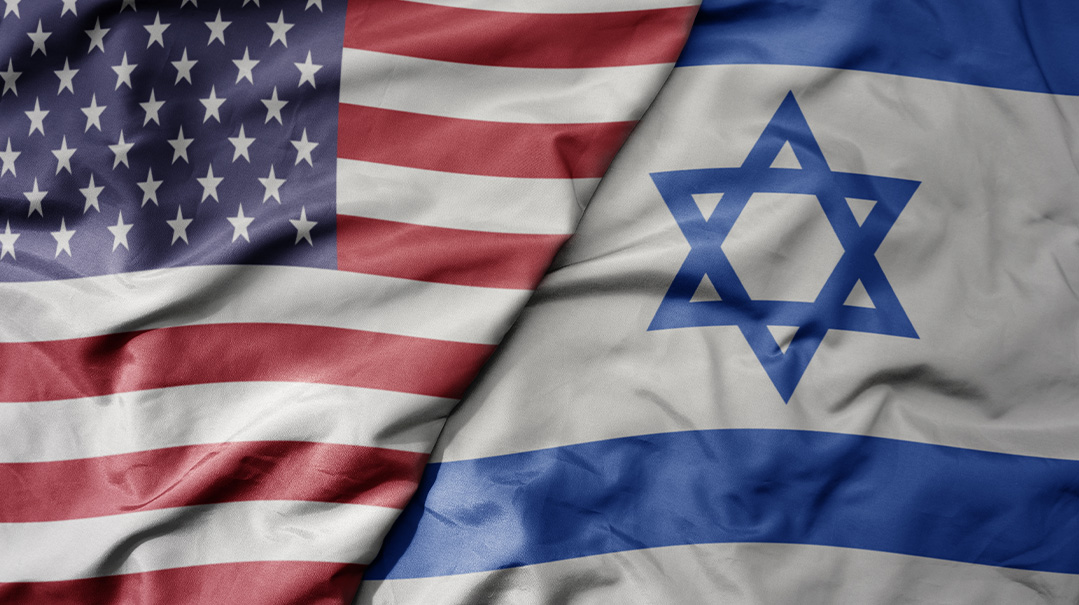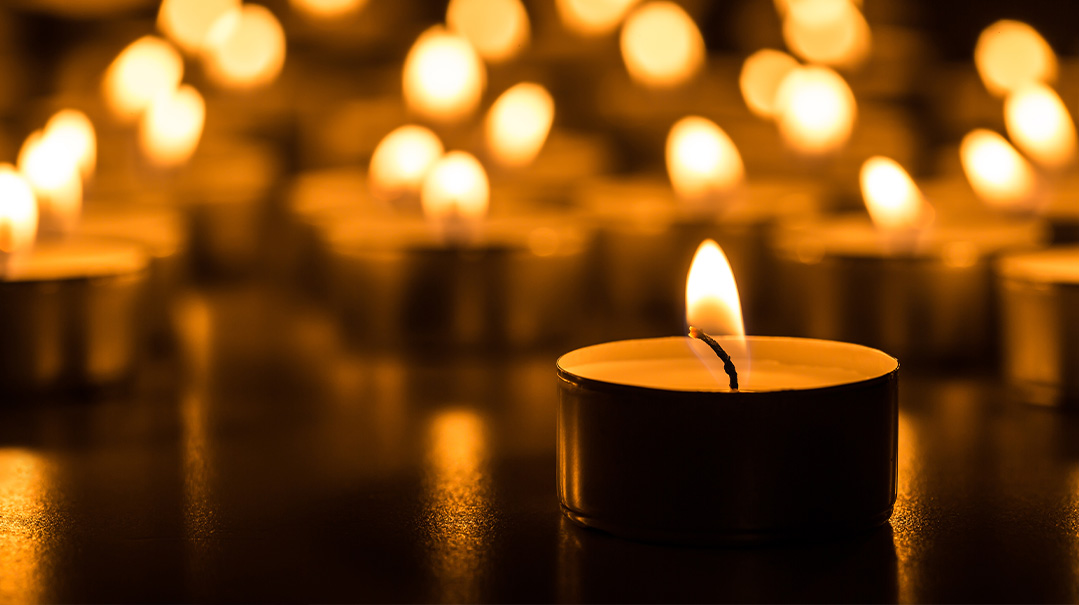Rays of Wisdom

“The Torah shines a bright light, and suddenly I see how the Torah enlightens a variety of disparate topics”
I have a rule not to write about any book that I have not read in its entirety. But I’m going to break that rule for my late brother Rabbi Mattisyahu Rosenblum’s posthumously published collection of essays, Rays of Wisdom (Eshel Publications), for two reasons.
First, it would be a disservice to readers to refrain from calling their attention to the sefer until I can find the time to complete all 543 pages. When my brother felt he had thoroughly clarified a Torah concept, he would often jump up and down in excitement, and then start drawing rapid-fire connections to other Torah concepts. As he put it, “The Torah shines a bright light, and suddenly I see how the Torah enlightens a variety of disparate topics.” Too many such “jump up and click your heels” moments and startlingly incisive formulations await the reader to delay any further.
(An example of the latter: Our essential task is to connect the Upper and Lower worlds. Materialism — Eisav — prevents that by focusing exclusively on this world. And Eastern spirituality, and the perverted vision of the World to Come of Yishmael, do so by focusing exclusively on the Upper World.)
Second, Rays of Wisdom is a collection of essays, not a single extended argument, and as such it is justifiable to focus on the opening and longest section, “Letters to Jordan” (the original working title for the entire volume), of over 200 pages of letters written by my brother to a talmid then studying in an Ivy League university. Mattisyahu’s life history as a much-decorated graduate of Yale, and as one who continued to read voraciously his entire life, made him the ideal guide.
The presence of a real recipient — unlike, for instance, Binyamin in Rav Shimshon Raphael Hirsch’s classic Nineteen Letters, who is, at least in part, a literary creation — served my brother well. He had, as he freely admitted, a tendency to be abstract — part of his attraction to Kabbalah — but the need to clarify his ideas for a beloved talmid pushed him to keep his responses concrete and clear.
THE LETTERS SERVE as a guidebook for how to discuss Torah with those who do not share our premises. First, “find at least some minimal area of agreement and shared values that allow for real discussion and dialogue.” Thus, in responding to the charge that Torah limits human freedom and turns people into robots, he pointed out that freedom is a Torah value: We daven for it three times a day — “teka b’shofar gadol l’cheiruseinu” — and proclaim that through Torah study, one becomes a free man, a ben chorin.
Next he points out that even the greatest exponents of liberty, such as John Stuart Mill, acknowledge that liberty cannot be unlimited or exercised by everyone — i.e., minors, the insane.
With that groundwork, we can now explore the difference between freedom as defined by the Torah and freedom as simply an absence of external restraint. But even here, he chose a metaphor from a secular source: Michelangelo’s description of his task as a sculptor as cutting away from the surrounding material to allow the pre-existing form of his subject to emerge. So too are we charged to uncover the unique tzurah (form) that each of us possesses. But that requires cutting away that which restrains the emergence of that form — “liberty from spiritual slavery or slavery to nature,” in the philosopher Isaiah Berlin’s formulation. The mitzvos are the cutting tools to allow that form to emerge.
To the charge that halachic restriction stifles human creativity, again my brother noted the high value placed on creativity by the Torah. In parshas Bereishis, we read how Hashem breathed into Adam and thereby bequeathed him the tzelem Elokim. Elokim is the Divine named used throughout the Creation story. Thus, when the Torah tells us that Hashem created man b’tzelem Elokim, it is informing us that “to be a creator is the deepest essence of the Divine image” we all bear. The tzitzis, which remind us of all the mitzvos, share a root with tzitz, or bud, and their placement on the extremity of our garments conveys the message that we must be continually growing and expanding ourselves.
From a negative perspective, the prelude for galus is found in the first verse of the Tishah B’Av Torah reading: “When you beget children and grandchildren and grow old in the land” (Devarim 4:25). Galus follows from the loss of creative spark, of newness.
And what is it that we are supposed to create? He answers: “A world in which Hashem exists... to create a life of faith is the greatest expression of creativity.” That is why the root of a craftsman, uman, is the same as that of emunah, faith. There is not one moment of our waking life, he writes, in which we do not have “an opportunity to creatively bring G-d into the world.”
We all crave newness, but there is newness and there is newness. The Egyptians also pursued newness, and it led them to be the most promiscuous of people (Rashi to Shemos 12:30). The Torah way is to draw energy not from superficial novelty, but by plumbing ever deeper into the familiar. In the context of marriage, that means the constant discovery of additional remarkable aspects of one’s spouse.
The chuppah constitutes a physical demarcation from above surrounding the chassan and kallah, a tangible reminder that they share the same shoresh haneshamah, Divine life force, and that all other apparent possibilities are not reality.
My brother writes passionately about the marital bond. In a series of letters on the “Torah’s View of Women,” he refutes the charge that the Torah views women as inferior to men, and not just different from them. But at the end, he makes clear to Jordan that this message is for Jordan himself, not just his classmates, for “a barely concealed contempt for one’s wife cuts away the basis for the more important relationship in one’s life.” Without success in marriage, “happiness is simply an impossibility.”
At one point, Jordan wrote to my brother that he found a great deal in wisdom in a course on Greek civilization. Reb Mattisyahu, who had been a classics major, responded with wonderment at his surprise. Each person must understand two major points. First, his own greatness — i.e., his ability to transform the world. And second, that we are mere creations, and all our power and greatness exist only because Hashem gave us that potential.
Most civilizations grasp one or another of those ideas. What they lack is the ability to retain both in mind at the same time. That is the unique aspect of Torah. The sword of Eisav cuts things apart, and is endlessly creating dichotomies. Yaakov, however, unites apparently contrary ideas in a larger synthesis, represented by the stones around his head uniting to become one large rock.
In Greece, man first became aware of his supreme powers. The Greeks’ foundational myth is that of Prometheus stealing fire from the gods. We, by contrast, make Havdalah every Motzaei Shabbos, in celebration both of the daas that allowed Adam to make fire and of the fact that Hashem gave us that daas.
The failure of the Greeks is not that they lacked wisdom, but that their wisdom was partial. They created harmony in the physical world, but could not harmonize or even conceive of harmony between Upper and Lower worlds. They denigrated the private realm, and thus the feminine elements associated with it. In Greek tragedy, all the action takes place in the presence of a chorus. Whereas Avraham and Yitzchak were all alone at the Akeidah.
The word Yavan (Greece) contains the letter yud, representing wisdom, but lacks the letter hei, found in Hashem’s name, which, according to the kabbalists represents the feminine elements. As such, the Greeks had access to Wisdom, but not to Truth, Hashem’s seal.
I THOUGHT I KNEW my brother well. But had I known him as well as I thought, I would have made much better use of our walks together and our time in the hospital during his final illness to learn from him. Accordingly, I am personally grateful for this volume and for the opportunity to become his talmid.
That he was very, very smart was evident by the time he was three. But what astounded me in these essays was his unwillingness to be satisfied with a superficial level of depth and the breadth of his Torah knowledge. Reading Rays of Wisdom have I attained for the first time some sense of all that is to be gained from the more esoteric Torah texts, from the Zohar to the Leshem.
Rare for someone who received so many accolades for his brilliance, Reb Mattisyahu was a genuine anav. At one point, he wrote to Jordan, “I don’t start from intuition, from what is called binah. Until I see a clear basis in the Torah, I simply don’t trust an idea. It is too easy to make a mistake.”
That modesty was most evident in his complete subservience to his teachers. That is evident in his precise citation of every insight he heard from Rav Moshe Shapira or, libadel bein chayim l’chayim, Rabbi Aaron Lopiansky, and precisely where they can be found. His great Gemara rebbi, Rav Tzvi Kushelevsky, saw his eagerness to understand precisely, and would often go over the shiur with my brother before giving it, and sometimes afterwards as well.
Both talmidim of my brother and his children stressed how nonjudgmental he was, and how that made it easy to talk to him. That non-judgmentalism was comprised of several strands. One was a middah he termed savlanus, defined as “carrying things to where they need to go.” That may involve bearing our anger until we find the right response — i.e., a manner to give effective tochachah.
The Torah teaches us to control our anger at others. Thus we are enjoined to give priority to unloading the beast of burden of our enemy. The ultimate Savlan is Hashem Himself, Who continues to furnish us with the energy necessary to live, even as we use that energy to sin against Him. As the Navi says, “I will carry. I made and I will bear” (Yeshayahu 46:3-4). And the more we exhibit the same patience, the more we shift the world in the direction of love and blessing.
To be nonjudgmental also means not insisting on one’s own narrow perspective, and that opens one up to perceiving other shards of truth to be incorporated in a larger unity. Even lies or errors often contain an element of truth, particularly if they are effective. And they can be learned from.
What does it mean, for instance, that Avraham received the reward of the ten generations from Noach to him? What reward did such reshaim possess? The answer is that they had the reward of all that Avraham learned from them. His tractate Avodah Zarah contained 400 chapters.
In one letter, my brother tried to calm Jordan’s anger at his chavrusa’s lack of interest in all those things that most excited Jordan and his mentor. He explained that what excited them was what the first Rashi on Bereishis refers to as nachalas goyim, the inheritance of the nations. That refers to, inter alia, all those questions that should concern any thoughtful human being — i.e., middos, ethics, justice, and the proper way for a human being to act. The Torah obviously has a great deal to say on all these subjects. But so do the nations of the world.
My brother told Jordan that he should recognize that his chavrusa’s desire to focus on the technical details of halachah and chakiras about why the service of a Kohein with his left-hand is invalid had a solid basis. For as the Midrash (Tanchuma, Ki Sisa 34) teaches, when the nations say to Hashem that they are His sons, He will answer, “I do not know. But whoever possesses my mysteries are My sons. And what are those mysteries? Hashem’s mysteries are contained in the Mishnah....”
My brother often joked that he was one of the only baalei teshuvah in our time to become observant out of a fear of punishment. Yet the most powerful message of his book — at least to me — is Hashem’s unceasing love underlying the Creation and His relationship with each and every one of us. “Being able to accept and deal effectively with a situation requires one’s realization: somehow this specific situation is what Hashem wants for me now,” he wrote. He could acknowledge that there were aspects of Torah that delighted him more than they would others who had never lived with a secular mindset.
Nowhere was it clearer that he lived according to what he preached than in his final illness. He had always borne the burden of his extraordinary intellectual gifts, and the corresponding feeling that he had not done enough with them. But in his final illness, as emails and letters poured in from former talmidim, he realized that he had actually made a large difference in the lives of many.
But for that final illness, my guess is that these extraordinary essays — “my pachim ketanim,” as he referred to them — would have never seen the light of day. But two talmidim convinced him to comb his computer for all that he had written over the years and turn them over to a skilled editor, Rabbi Yisroel Shaw, for preparation for print.
The result is a true monument for his large soul — a monument he recognized as Hashem’s final chesed for him.
(Originally featured in Mishpacha, Issue 934. Yonoson Rosenblum may be contacted directly at rosenblum@mishpacha.com)
Oops! We could not locate your form.







